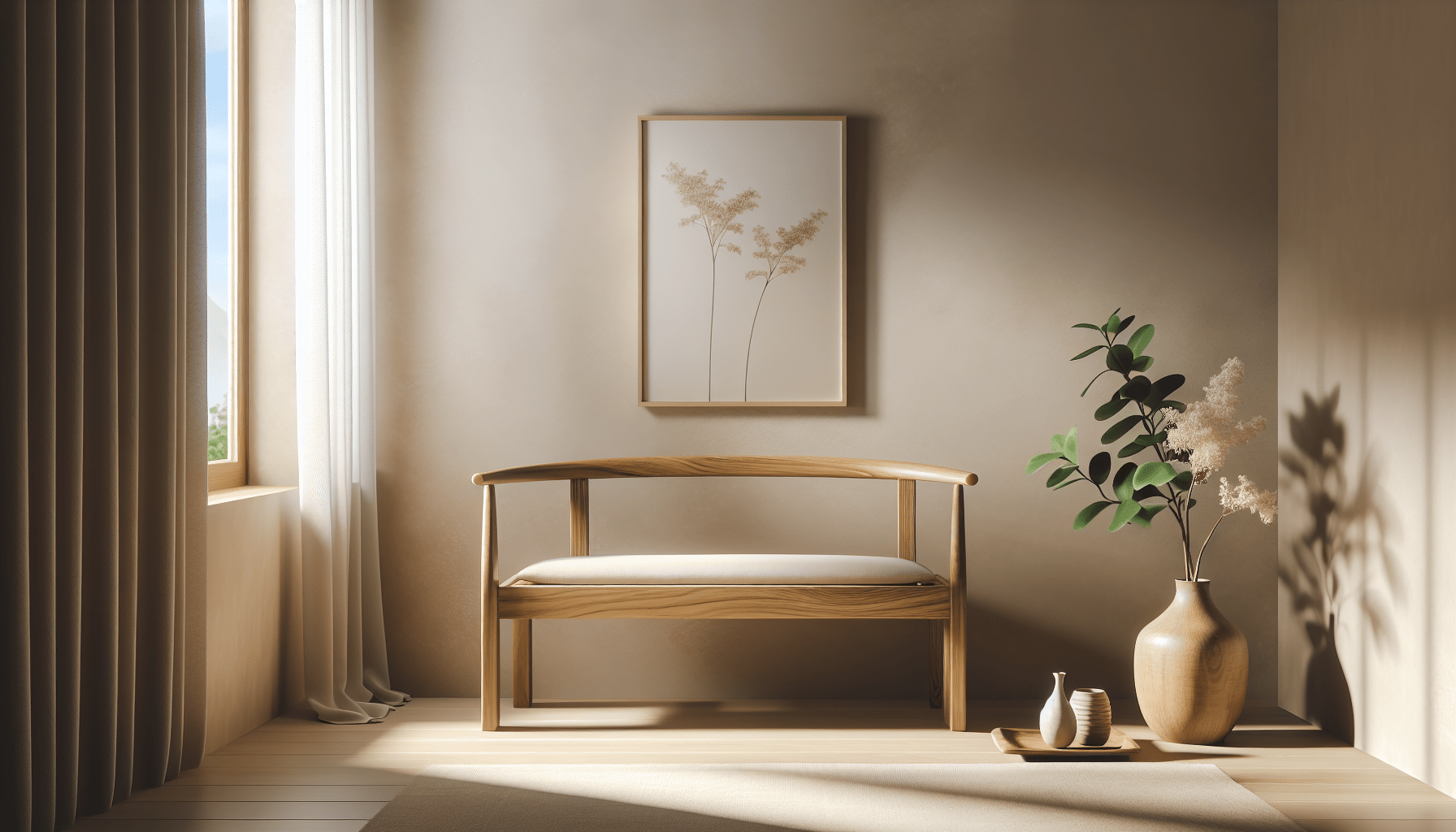Sure! Let’s get started on your journey toward designing a Japandi-style studio apartment.
Understanding Japandi Style
Have you felt a pull towards simplicity and elegance in your living space? The Japandi style might be just what you need. This hybrid design style combines the minimalism of Japanese design with the rustic elements of Scandinavian decor, creating a cozy yet refined atmosphere.
In a world filled with clutter and distractions, Japandi promotes a serene and intentional living environment. It’s all about creating a space where form meets function, leaving you with a tranquil retreat in your studio apartment.
Key Characteristics of Japandi Design
Understanding key characteristics will guide your design choices. Here’s a brief overview:
| Characteristic | Description |
|---|---|
| Minimalism | Simplicity and uncluttered spaces are essential. |
| Natural Materials | Wood, bamboo, stone, and linen take center stage. |
| Neutral Palette | Soft earth tones, neat whites, and gentle greys dominate the color scheme. |
| Craftsmanship | A focus on handmade pieces and quality over quantity. |
| Multifunctionality | Furniture serves more than one purpose, ideal for smaller spaces. |
This table summarizes the essence of Japandi, helping you visualize what elements to incorporate.
Planning Your Studio Layout
How you arrange your furniture can significantly impact the feel of your studio. Start with a floor plan that allows natural flow while maximizing space.
Measuring Your Space
Measure your studio to understand its dimensions. Consider the arrangement of windows and doors, as these elements influence light and movement within the apartment. Having accurate measurements helps in selecting appropriately sized furniture that doesn’t overwhelm the space.
Defining Zones
Even within a small area, you can create zones. Here’s how:
- Sleeping Area: This is your sanctuary. A low-profile bed or a platform bed can provide that Japanese touch.
- Living Area: Incorporate minimalists sofas or chairs positioned to foster easy conversation and relaxation.
- Workspace: If you need to work from home, a small desk that blends with the decor can serve as an effective workspace.
By segmenting your studio into distinct zones, you maintain functionality while adhering to the principles of Japandi design.
Selecting the Right Color Palette
When considering colors, think about how they affect mood and perception.
Neutral and Earthy Tones
Your primary palette should focus on soft, neutral colors combined with subtle earthy tones. Here’s a simple scale of suggested colors:
| Primary Color | Complementary Colors |
|---|---|
| Soft White | Light Grey, Beige |
| Pale Brown | Muted Green, Dusty Blue |
| Charcoal Grey | Warm Tan, Sage Green |
These colors create a calm and restful environment, reflecting the spirit of nature that’s essential in both Japanese and Scandinavian aesthetics.
Choosing Furniture
Selecting the right furniture is crucial for achieving that polished Japandi look.
Embrace Minimalism
Keep your furniture choices streamlined. Look for pieces that offer multifunctionality. Depending on the space, consider the following:
| Furniture Type | Suggested Options |
|---|---|
| Sofa | A sleek, low-profile sofa or daybed |
| Dining Table | A small wooden table with natural finish |
| Coffee Table | A simple, sturdy table that doesn’t clutter |
| Storage Solutions | Furniture that serves as storage, like ottomans or benches |
Always opt for natural materials like wood or unpolished metals, as they add warmth and tactile richness to your space.
Natural Textures
Layering different textures is key to creating depth in a minimalist environment. Think about:
- Wood: Use for furniture and flooring.
- Textiles: Include cushions, throws, and area rugs made from wool or linen to create a warm ambiance.
- Plants: Incorporate greenery, which not only beautifies but also enhances air quality.
Smart Storage Solutions
Given that you’re working with a studio apartment, effective storage will help you maintain a tidy environment.
Incorporating Hidden Storage
You might find innovative ways to incorporate storage without compromising style. Consider options such as:
- Murphy Beds: These fold away to reveal a multifunctional space during the day.
- Storage Ottomans: They provide extra seating along with hidden compartments for blankets or magazines.
- Wall-Mounted Shelves: These keep items off the floor, preserving the minimalist aesthetic.
Utilize Vertical Space
In a studio, vertical space is often underutilized. Hanging shelves or tall bookcases can draw the eye upward while providing additional storage without consuming precious floor space.
Lighting for a Japandi Studio
Lighting plays a significant role in shaping the atmosphere of your apartment.
Embrace Soft, Natural Light
Aim for natural light wherever possible. Choose sheer window treatments that allow sunlight to filter in while maintaining privacy. If your apartment lacks natural light, consider the following lighting options:
| Lighting Type | Description |
|---|---|
| Floor Lamps | Opt for simple designs with warm bulbs. |
| Table Lamps | Use lantern-style lamps for a cozy vibe. |
| Pendant Lights | Minimalist fixtures can add visual interest. |
Focus on creating layers of light; this sets a warm yet functional ambiance throughout your studio.
Textiles and Accessories
Even in a minimalist space, accessories can enhance the overall design without overwhelming it.
Choosing Textiles Wisely
When selecting textiles, remember to keep it cohesive. Look for patterns and colors that match your overall color scheme while emphasizing natural materials. You could include:
- Textured Blankets: They add warmth and comfort to your seating area.
- Linen Cushion Covers: Soft textiles give a luxurious feel without being ostentatious.
- Area Rugs: A simple rug can define a space while adding softness underfoot.
Using Art Responsibly
Avoid overcrowding your walls with art. Instead, choose a few focal pieces that resonate with your style. Minimalist prints or paintings with natural themes can effortlessly complement the Japandi aesthetic.
The Importance of Indoor Plants
What if you could bring nature indoors? Plants play an essential role in Japandi design, adding vibrancy and life to your apartment.
Selecting the Right Plants
Choose plants that are easy to maintain. Here are some beginners’ favorites:
| Plant Type | Care Level |
|---|---|
| Snake Plant | Low maintenance |
| ZZ Plant | Low maintenance |
| Pothos Plant | Moderate care |
| Peace Lily | Moderate care |
Incorporating greenery not only beautifies your space but also promotes a sense of well-being. Just be sure you have adequate light for the plants you choose!
Sustainable Practices in Japandi Design
As you create your Japandi studio, integrate sustainability into your design process.
Eco-Friendly Materials
When purchasing furniture and decor, consider eco-friendly options. Prioritize items made from sustainably sourced materials or those produced by local artisans.
Second-Hand Finds
Don’t shy away from thrift stores or online marketplaces for unique pieces. Vintage items often possess a craftsmanship quality that aligns with the Japandi focus on well-made goods.
Personalizing Your Space
While Japandi embraces minimalism, it also allows for a touch of personalization.
Meaningful Décor Items
Include personal items that tell your story without cluttering your space. Travel souvenirs, family heirlooms, or handcrafted items can enhance your sense of home. Aim for few but meaningful pieces that create a cohesive narrative.
Displaying Books
Bookshelves can act as both decoration and storage. Curate a selection of books that reflect your interests and align with the color scheme of your space. Neatly arranged books can serve as a statement piece.
The Final Touches
Now that you’ve created a beautifully designed Japandi studio, it’s time for the final touches.
Aromatherapy and Sound
Consider how scents and sounds impact your living space. Essential oil diffusers can bring soothing aromas into your studio. Choose calming scents like lavender or cedarwood to enhance your relaxing ambiance.
For auditory comfort, invest in soft music or sound machines that can fill your space with gentle background noise.
Maintenance and Upkeep
To maintain that serene atmosphere, establish a routine for decluttering and cleaning. Japandi design is about intentionality, so ensure your space remains a reflection of that philosophy.
Conclusion: Create Your Oasis
Now that you have a comprehensive guide to designing your Japandi-style studio apartment, it’s time to put your plan into action. How will you begin?
By focusing on tranquility, functionality, and beauty, you can create a sanctuary that’s perfectly tailored to your lifestyle. Embrace simplicity and personalization as you develop your Japandi haven, making your studio a true reflection of you. Enjoy the journey of transforming your space into a warm, inviting, and aesthetically pleasing home!

